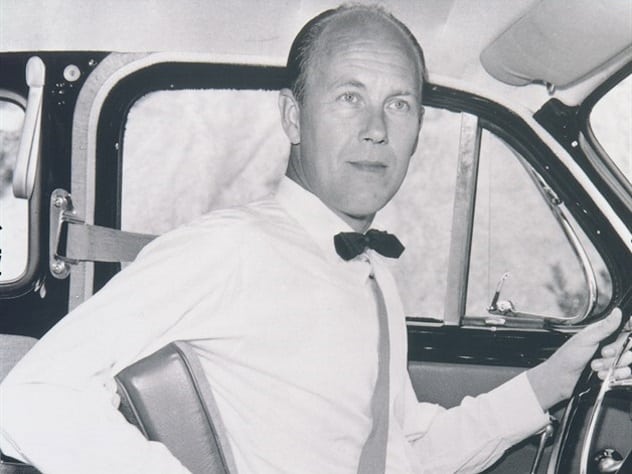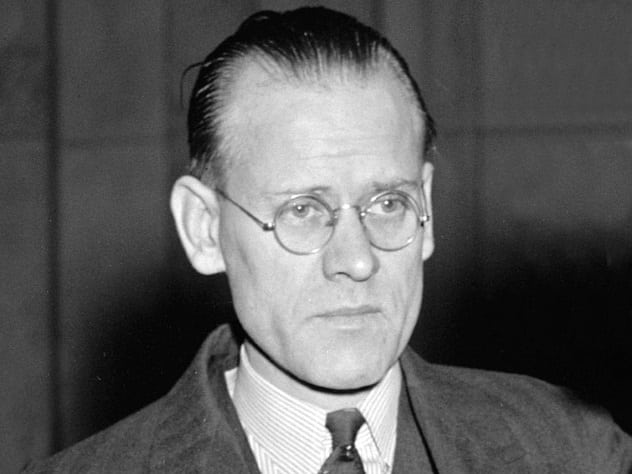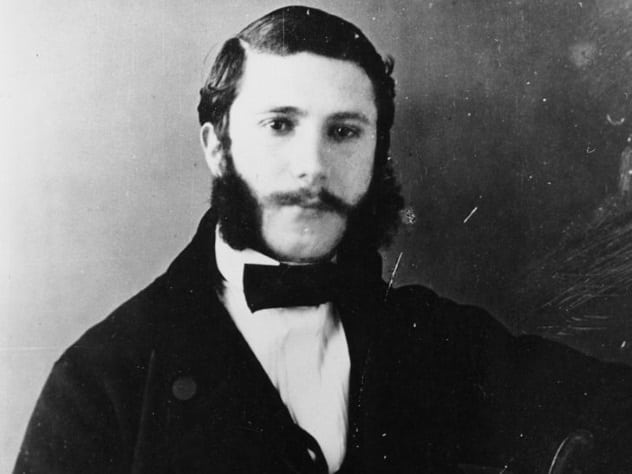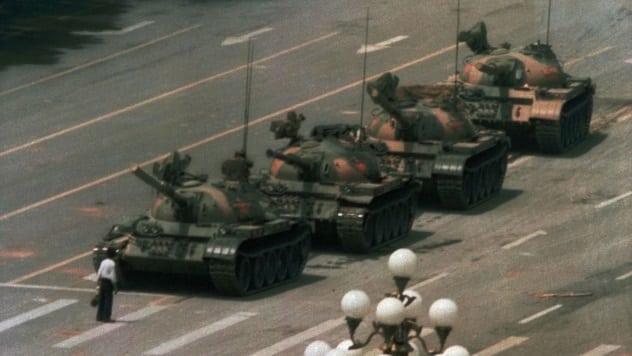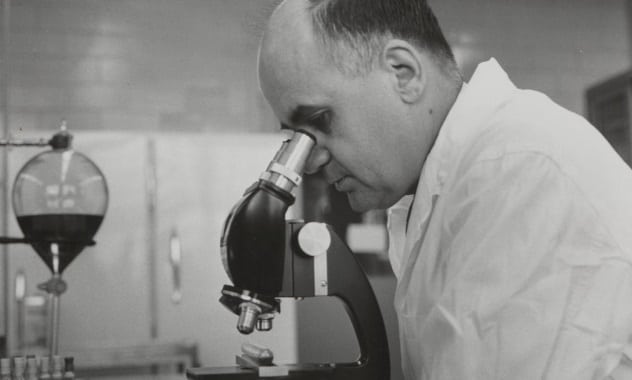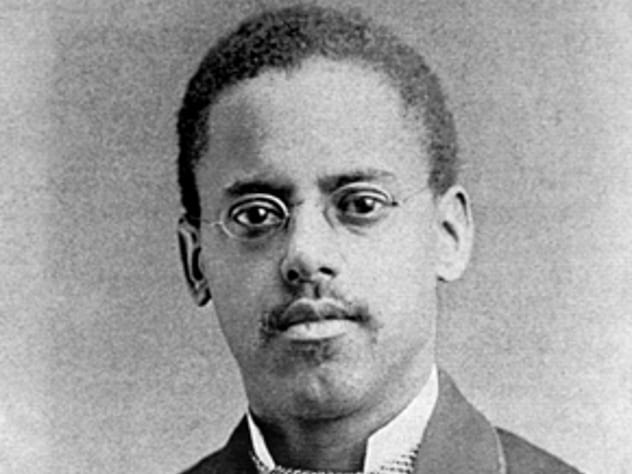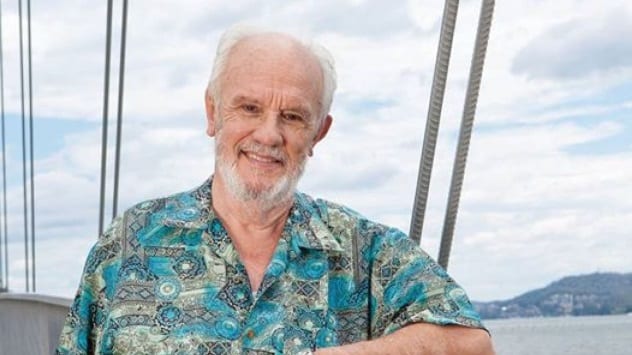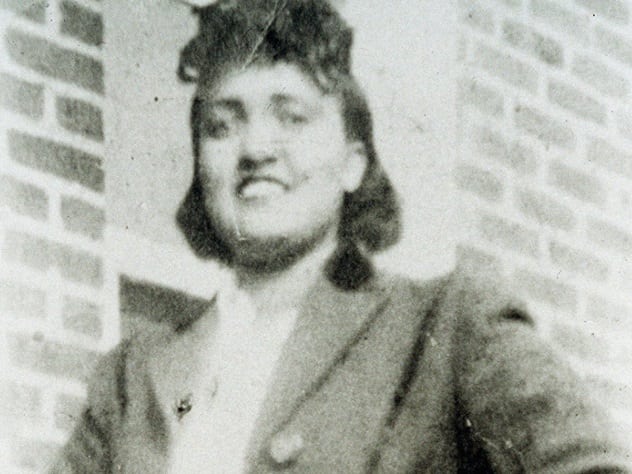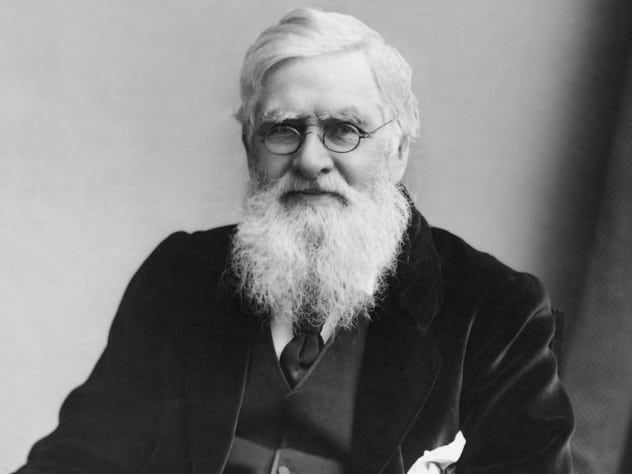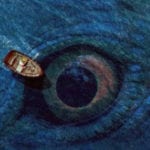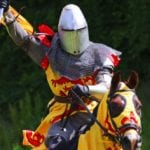There are, of course, a few people whose names will live long after them. And then there are those anonymous pioneers whose achievements, good and bad, changed the course of history but whose names are, for the most part, unknown to us. Whether by design, by accident, or by malicious afterthought, there are some people whose contribution to the history of the world has gone largely unrecognized. Until now.
10 Nils Bohlin
Nils Bohlin was working for Volvo in 1958 when he came up with a revolutionary design that has saved millions of lives—the seat belt.[1] Simple lap seat belts had been around for a long time, but the three-point safety belt was a major technological advancement with a simple design. Bohlin received a patent for the design the next year. After some initial resistance from drivers who resented being told what to do, even for their own good, the three-point seat belt has become a standard feature in new cars around the world. There is no way of knowing exactly how many lives the seat belt has saved, but the number is estimated to be in the millions. Buckle up!
9 Philo Farnsworth
In 1927, Philo Farnsworth managed to transmit an image of a straight line through the air. By 1929, he had improved his design and managed to transmit a picture of his wife—much more exciting, even if the picture was a little blurry. Though he called it an “image dissector,” Philo had, in fact, just invented television.[2] So, why did John Logie Baird get the credit? Well, Baird was one of the pioneers of television and also much more business-minded. He demonstrated the first color television in 1928. Philo turned down offers to buy out his patents and started his own business but couldn’t compete with the large companies that were getting in on the act, and his business folded. Philo remained an inventor until the end of his life in 1971 but never again invented anything as wonderful as TV.
8 Henry Dunant
Henry Dunant won the very first Nobel Peace Prize in 1901. Passing through Solferino, Italy, during the Second Italian War of Independence, Dunant was appalled at the suffering that he saw. In 1862, he published a book, A Memory of Solferino, which described the efforts that were being made to care for the wounded at the scene. He also proposed a plan. Dunant suggested the nations of the world should form their own relief societies to care for the wounded and train volunteers on the best ways to treat them. He also wanted the governments of the world to guarantee that wounded soldiers would be treated and that those treating them would be guaranteed safe passage. Dunant traveled all over Europe promoting his plan, and on August 22, 1864, 12 nations signed the first Geneva Convention, agreeing to “guarantee neutrality to sanitary personnel, to expedite supplies for their use, and to adopt a special identifying emblem—in virtually all instances a red cross on a field of white.”[3] Henry Dunant had helped to bring about the first Geneva Convention, which has saved the lives of thousands of soldiers around the world. He also founded the Red Cross.
7 Tank Man
In 1989, a democracy movement, comprised mostly of students, occupied Beijing’s Tianenmen Square to demonstrate for political change. But on June 4, the army moved in. The Chinese government ordered the massacre of the students. It is estimated that over 10,000 protestors were killed that day in an orgy of violence that saw soldiers bayonetting, shooting, and driving over young students in their armored personnel carriers. The campaign for democracy was over. The human spirit is, however, indomitable. On June 5, as a line of tanks was rolling into Tianenmen Square once more, one lone protestor, carrying nothing but a shopping bag, walked in front of the lead tank to block its path. The tank tried to move around him. Tank man blocked its path again. And again. And again. Eventually, the tanks switched off their engines, and the protestor climbed onto a tank to talk to the soldiers. The standoff only ended when the man was pulled away from the tank and disappeared into the crowd. The man has never been identified, and no one knows whether the hands that pulled him away were Chinese police or friends concerned for his safety. Coverage of the incident in China was heavily censored, and not many people there remember it today. But, whether he knows it or not, the image of Tank Man facing down a line of tanks has become one of the most iconic symbols of resistance in the world, and hopefully one day, he will be able to see it, too.[4]
6 Maurice Hilleman
Not all achievements require bravery and self-sacrifice. Take Maurice Hilleman, for example. Maurice found other ways to change the world; he created a number of vaccines. He developed the mumps vaccine after his daughter contracted the illness in 1963. He took a swab of the back of her throat, drove to his laboratory in the middle of the night, and figured out a way to turn that into the vaccine that we use today. And he didn’t stop there.[5] In total, Maurice Hilleman has single-handedly developed more than 40 different vaccines, including eight commonly given to children in order to prevent measles, mumps, hepatitis A and B, chickenpox, meningitis, pneumonia, and Haemophilus influenzae. His work has probably saved millions of lives and prevented serious complications as a result of the diseases. The MMR vaccine alone has been given to over a billion children around the world. And all because his daughter got the mumps.
5 Witold Pilecki
Knowing that there was something funny going on in Auschwitz, Witold Pilecki volunteered to get himself captured so that he could to pass information to the Allies. Not only that, but while he was there, he used a radio transmitter cobbled together from smuggled parts and reported to the Polish Resistance (who forwarded the information to the Allies) about what was really happening to prisoners incarcerated there. Even more remarkably, Pilecki then managed to break out of Auschwitz. He continued to fight with the Polish Resistance afterward. A fierce patriot, Witold Pilecki was one of the heroes of the Warsaw Uprising in 1944, which attempted to free Poland from German occupation. After the uprising was crushed, Pilecki was once again imprisoned, this time in a prisoner of war camp, where he stayed until the end of the war. Heroism must have been in his blood, because Pilecki accepted another mission, this time to return to Poland to report on its occupation by the Soviet Union. He was arrested by the secret police in 1947 and convicted of espionage. He was executed in 1948. In 2006, Pilecki’s extreme heroism in exposing the atrocities at Auschwitz was finally rewarded by a grateful nation, when he was posthumously awarded the Order of Polonia Restituta and the Order of the White Eagle by the president of Poland.[6] He would have been proud.
4 Lewis Latimer
Lewis Latimer, the son of runaway slaves, was the draftsman who helped Alexander Graham Bell file his patent for the telephone. That’s kind of impressive, but that’s not all. Latimer also patented a carbon filament for the incandescent light bulb in 1881. Though Thomas Edison is generally credited as the inventor of the light bulb, he had, until that time, only been able to make the bulbs light up for a few minutes at a time. Latimer patented his method for making carbon filaments, which allowed light bulbs to burn for hours before burning out. Much more useful.[7] Not only that, but Latimer was a pioneer of the electric lighting industry and one of the charter members of the Edison Pioneers, who worked closely with Edison in the further development of electric light. Of the original 100 Pioneers, Lewis Latimer was the only black man. He went on to invent a number of other useful gadgets, including a flushing train toilet and a device which cooled and disinfected patients’ rooms in hospitals, thus reducing the rate of hospital-acquired infections.
3 James Harrison
James Harrison has saved the lives of over two million people. Known as the Man With The Golden Arm, James’s blood produces a rare antibody which cures the otherwise fatal Rhesus disease in unborn children.[8] James has donated his blood 1,173 times, a Guinness world record. It is estimated that James’s donations have saved the lives of almost 2.4 million babies. James was forced to retire as a blood donor when he reached the age of 77, the maximum donor age in Australia, where he lives. However, his blood has also been used in the development of a medicine, known as anti-D, which, it is hoped, will banish the Rhesus disease in children forever.
2 Gavrilo Princip
Gravrilo Princip is a man who could certainly be claimed to have changed the course of history. He assassinated Archduke Franz Ferdinand, which led directly to the outbreak of World War I and indirectly to World War II, as well. Princip was born into a Slavic territory in Austria–Hungary in extreme poverty from which there was no escape.[9] On June 28, 1914, Princip fired his gun twice at the archduke’s car, killing both the archduke and his wife. He was 19 at the time. This event led to the invasion of Serbia by Austria-Hungary, followed swiftly by German invasions of Belgium and France and the declaration of world war by the Allies just a month later, on July 28. Some 18 million soldiers and civilians were estimated to have been killed in the war, with 23 million wounded. Too young for capital punishment, Princip was sentenced to 20 years’ imprisonment but died of tuberculosis in 1918, shortly before the war ended.
1 Henrietta Lacks
Henrietta Lacks would be amazed to find herself on a list of people who changed the world. Henrietta was a poor tobacco farmer from Virginia. Her death was remarked by no one except her children, her family, and her friends. However, Henrietta Lacks is the source of the HeLa cell line—her blood contained uniquely immortal cells that can live outside her body indefinitely. After the birth of her fifth child in 1951, Henrietta was admitted to Johns Hopkins University Hospital complaining of “a knot in her womb,” and doctors took a sample of tissue. It was soon noticed that, unlike normal cells, Henrietta’s cells did not die after a few days but rather continued to grow, doubling every 20 to 24 hours.[10] Henrietta’s cells can be found in the trillions in laboratories around the world. They have been used by medical researchers studying not only cancer but also hemophilia, influenza, leukemia, and Parkinson’s disease. They were also used in developing the polio vaccine, the cancer drug tamoxifen, chemotherapy, gene mapping, and a whole host of other uses. The HeLa cells show no signs of dying. Henrietta Lacks, however, died within months of her admission to the hospital due to a malignant tumor in her cervix. She was buried in an unmarked grave, never knowing that she would go on to save millions of lives and that her remarkable cells would live forever. Henrietta’s grave finally received a headstone in 2010.
+ Alfred Russel Wallace
Alfred Wallace was a British anthropologist and explorer. He wrote a series of articles on natural selection and the theory of evolution before Charles Darwin got onto it. So, why isn’t natural selection called “Wallaceism?” It seems Wallace didn’t fit the expected profile of a serious scientist. Not only was he interested in natural science, but he also took a keen interest in socialism, spiritualism, and the certainty of life on Mars. Also, it seems that Wallace wasn’t very shrewd. Coming up with his theory after a bout of illness kept him in his bed, he wrote his ideas down and sent them to Darwin, who was working in the same field and who Wallace hoped would help him get the ideas published. Darwin read the work and was horrified. He hastily wrote his own paper. Both versions were read to members of the Linnean Society in 1858.[11] However, Darwin used his connections to ensure that his was read first and followed it up by immediately publishing a book the subject, thus cementing his reputation as the man who challenged God, while Wallace seemed happy to go on traveling, studying, and writing articles about whatever interested him. Natural selection at work. Ward Hazell is a writer who travels, and an occasional travel writer.
